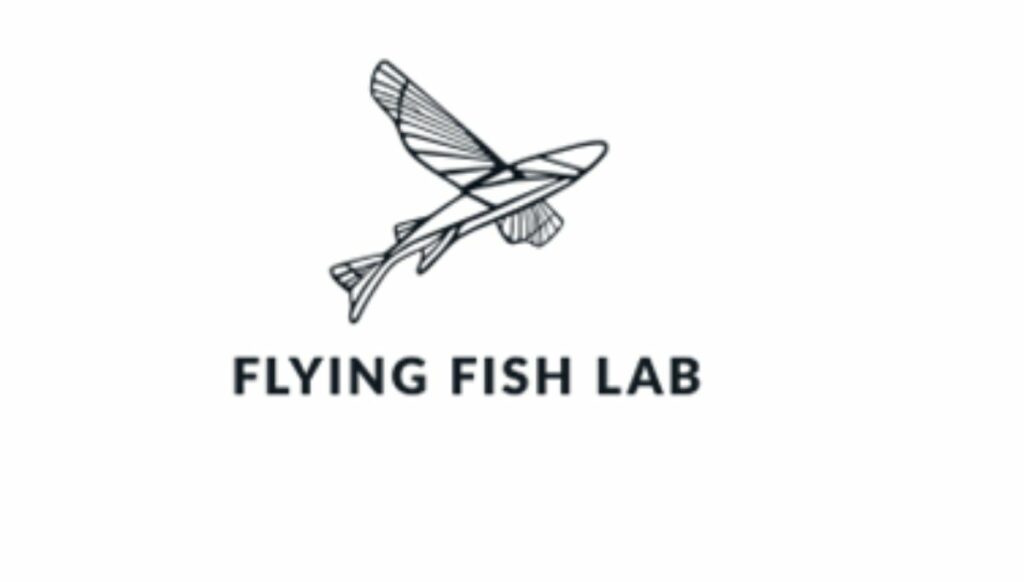In an exclusive interview, Mario Braz de Matos, the Co-founder and Managing Partner of Flying Fish Lab, delves into the dynamic landscape of brand growth. With his extensive experience spanning nearly three decades across five continents, Mario offers profound insights into the challenges and opportunities facing companies in this vibrant region. From the impact of technology and AI on consumer behavior to the nuances of market disruption and brand strategy, his expertise sheds light on the evolving nature of marketing in Asia’s diverse and rapidly changing environment.
In your experience, what are the most common challenges companies in the region face when trying to grow their brands and businesses?
While there is still underlying market growth in many categories in the region, many companies are still facing several challenges when it comes to growth. A saturated market, with an extensive offer and strong price focus, can make it difficult for companies to grow, even in growing segments. To compound this situation, a very fragmented media landscape makes it increasingly difficult to establish a distinctive proposition in consumers’ minds.
It’s not all the same obviously, and there’s a significant difference between multinational corporations (MNCs) and startups or small businesses. SMEs often benefit from their homegrown appeal while MNCs struggle to maintain relevance. Inflationary pressures persist, even with a slight slowdown, leading to rising prices and high interest rates that affect both businesses and consumers.

Asia’s growth is intricately tied to China’s economic performance, and with China experiencing a slowdown, achieving growth in the region becomes more challenging. While industry-specific challenges may exist, these are the primary obstacles that businesses in the region commonly encounter when seeking to expand and enhance their brands.
How is technology, particularly AI, changing the consumer landscape faster than companies can adapt? What are the potential threats and opportunities this brings for brands?
Technology, notably AI, presents both unique challenges and opportunities for businesses and consumers alike. It’s a transformative tool, the impact of which hinges on how effectively it’s utilised.
One key challenge is the pace at which consumers adopt new technologies, often outstripping a company’s ability to integrate these advancements into their operations. Businesses should distinguish between vital and peripheral elements as the tech landscape broadens. What seems non-essential today could be indispensable tomorrow. Companies that lag in embracing tech innovations risk becoming obsolete.
AI stands out as a significant influencer of consumer behaviour. It equips consumers with the tools to make more informed decisions, raising their expectations and sophistication. This shift will see a decline in the effectiveness of traditional marketing tactics and useless product attributes, as consumers increasingly seek better value in their purchases.
AI is accelerating the rate of change, just as the mobile phone did when it was able to offer a decent user experience on the internet. Each advancement opens new avenues for engagement, interaction, problem-solving, and experience; businesses slow to adapt are at risk of falling behind.
Another key aspect is the ability of senior management to understand and integrate these tech-driven changes, particularly when they are personally detached from the latest advancements. Organisations that rely heavily on a less tech savvy, narrow senior leadership group, are more vulnerable to decline.
For brands, this means navigating a future with greater competitive pressure resulting in a need for constant improvement that will reflect on better proposition and more innovation. They must strive to appeal to a consumer base that is increasingly well-informed and discerning, with a plethora of choices.
It’s a time where adaptability, foresight, and a keen understanding of technology’s role in shaping consumer preferences will be key to success.
Looking towards 2024 and beyond, what do you foresee as the main drivers of category disruption? How will the roles of AI and technology compare to strategy and execution in this context?
As we look towards 2024 and beyond, technology, with a particular emphasis on GenAI, emerges as a pivotal force driving disruption across various industries. AI’s role in catalysing growth is becoming more pronounced in highly competitive and maturing markets. It stands out as a tool of immense operational leverage, with its most tangible benefits seen in execution. Its ability to enhance efficiency and provide measurable outcomes is particularly significant in this area.
Also Read: Myntra’s Fresh Approach Captivates Gen Z with Creative Fashion
From my perspective, while AI plays a role as a great asset in supporting strategy development, the core of strategic decision-making will, and should, continue to be a predominantly human endeavour. AI’s strength lies in processing data to enable better insights and enhancing the process, but the interpretation and key strategic decisions should be the prerogative of human judgement within an organisation. The interplay between AI’s analytical prowess and human strategic insight will shape the future of business disruption.
In an era where it’s increasingly challenging to justify marketing investments, what strategies can marketers employ to support their case?
In an era where market growth is starting to plateau and product differentiation becomes subtler – take, for instance, the marginal distinctions between the latest and preceding models of smartphones from brands like Apple or Samsung – the imperative for brand distinction intensifies.
We’re entering a time where each industry has its distinct dynamics, yet they all share a common challenge: the necessity for brands to amplify their efforts and often increase investments to tackle emerging problems and seize new opportunities.
The issue here is timing. This comes at a moment when consumers growing more price-sensitive, in some part due to inflation, and yet marketing budgets are increasingly under pressure as they are typically a certain percentage of sales revenue and growth is not as easy as it was in the past.
For businesses to maximise the returns on their marketing investments in this tight scenario, the answer lies in leveraging technology and AI. These tools offer promising ways to boost marketing efficiency and effectiveness. They align perfectly with the needs of a consumer base that is not only more conscious about prices but also better informed. With AI and technology integration, marketers can navigate these complex dynamics productively, ensuring that every dollar spent brings maximum impact.
Can you elaborate on the concept of ‘Intelligent Naivety’ and how, when combined with Category Expertise, it can unlock new opportunities for brands?
‘Intelligent Naivety’ is a concept that, when paired with deep category expertise, can be a powerful catalyst to unlock new opportunities for brands. The paradox of profound knowledge in a specific field is that it can sometimes limit the exploration of new possibilities and novel ideas, especially when it requires you to revisit things you have taken as a “given” for a long time. When you’re deeply immersed in a category, there’s a tendency to view established norms and practices as almost sacrosanct, making them difficult to question or deviate from.
This is precisely where ‘Intelligent Naivety’ plays a transformative role. It’s about challenging these ingrained beliefs and assumptions, allowing for the exploration of new possibilities through the lens of consumers. It encourages looking at familiar scenarios with fresh eyes, questioning the status quo, and thinking outside traditional constraints and definitions.
Take the air fryer invention as an example – When looking to create a “Next-generation” fryer, someone had the courage to ask: Do we need fat to fry? The answer was yes, but not as much as we thought. This opened a new possibility, making this new product is a market staple today. The invention of an air fryer created a new category, simply for questioning a “given” idea: frying potatoes must be done in immersion.
The examples are so many, but the key point is that this ability to think laterally is invaluable. ‘Intelligent Naivety’ energises teams, spurring them to recognise and exploit new opportunities. It helps break away from conventional thought patterns, and it’s this blend of expertise and fresh perspective that can drive innovation and growth for brands.
What is your perspective on “Next-gen” Creative Crowdsourcing? How does it fit into the modern marketer’s toolbox, and in what ways can it help create disruptive solutions for brands?
Traditional Crowdsourcing, often seen as a catch-all solution, isn’t without its pitfalls. The contest-based format, where many contribute but few are rewarded, can lead to participant disenchantment due to a perceived lack of value for their efforts.
Next-gen Creative Crowdsourcing, however, adopts a more progressive and equitable stance. It’s rooted in fairness and respect, emphasising the voluntary and participatory essence of these collaborative efforts. This approach is tailored to be more inclusive and adaptable, catering to specific needs that vary by region or individual preferences, such as cultural nuances in Asia versus Europe or interests like Manga enthusiasts and Sci-Fi lovers.
Also Read: Zebronics Partners with Artist Santanu Hazarika for an Art-Inspired Tech Collection
Unfortunately, many marketers overlook this advanced crowdsourcing method due to preconceived notions rooted in traditional approaches. This oversight means missing out on a potent tool capable of addressing a myriad of brand challenges.
A critical aspect of this evolved crowdsourcing is communication, especially given the smaller, more manageable group of creative contributors involved. This fosters a more engaged community of participants.
Next-gen Creative Crowdsourcing proves indispensable across multiple brand-related arenas, including product development, brand propositions, communications, productivity, claims, and packaging.
Extensive knowledge within a field can sometimes inhibit out-of-the-box thinking. Here, Next-gen Creative Crowdsourcing shines by offering fresh, unconstrained perspectives for innovative problem-solving and brand development.
Why do you believe that even industry giants need to adopt the mindset of smaller, more agile competitors to stay ahead?
I’ve worked in the consumer goods sector for most of my life before setting up my own company. My Innovation Center work in Unilever was an eye opener on how dominating a category can lead to complacency. Unilever’s decision to sell its core business was a significant shift from its origins. This move could be viewed as a reflection of the challenges they faced in staying attuned to evolving consumer preferences.
Similarly, my experience with Nokia highlighted the importance of market adaptability. Nokia’s journey is well-known for its rapid ascent and a swift change in fortune. This serves as a reminder that even the most successful companies must remain vigilant and responsive to consumer demands to maintain their position in the market.
Ultimately, this lesson extends beyond individual companies that caught the marketing headlines. Consumers today have a plethora of options, are more informed, and often have limited time. Unless a brand adopts a ‘hungry challenger’ mindset and constantly strive to evolve their consumer offering, its relevance will be in jeopardy at some point soon: either because the landscape has made them obsolete, or consumers went somewhere else—or both.
The crux of the matter is that current market dominance is not a guarantee of future security. It’s essential for brands to maintain a vigilant focus, quickly adapting to new tech developments, industry shifts, and changing consumer preferences. This mindset, more characteristic of smaller, agile competitors, is crucial for any industry giant looking to stay ahead.
Reflecting on your diverse global experience, how do you balance the intellectual and emotional aspects of leadership? What are some key learnings you’ve gathered from your journey across different continents and industries?
My experiences have taught me that effective leadership requires a balance of intellectual and emotional aspects. Leaders need the intellectual acumen to make clear and effective decisions, but equally important is the emotional capacity to infuse these decisions with meaning and values. At its core, leadership is a service – to the business and to the team, ensuring they have what they need to succeed and thrive at an individual and organisation level.
This service-oriented mindset is about more than just guidance; it’s about removing obstacles, providing direction, and empowering team members to grow personally and professionally. My philosophy is rooted in the belief that we are all on a collective journey, but each one’s experience will be different. As a leader, it’s my responsibility to learn from past mistakes and provide better leadership than I’ve experienced, understanding that we are each at different stages of our growth journey.
The landscape of work and leadership has evolved significantly. Gone are the days when having a job was enough. Today’s younger generation seeks to contribute to something larger that transcends mere job descriptions – the greater good. As leaders, it’s crucial not only to recognise this aspiration but to actively facilitate it.
A company is not an abstract entity, nor is it just a physical structure like a factory. It’s the people, the spoken and unspoken rules of engagement within a business context, that truly define a company. Leaders should acknowledge this and act as catalysts, fostering an environment where both the business and its people can flourish. This blend of intellectual rigor and emotional intelligence is key to successful leadership.
With consumers becoming more cost-conscious due to rising prices, what advice would you offer to brand owners and business leaders to navigate this landscape effectively?
As consumers are increasingly vigilant about their spending due to rising prices, it’s important for brand owners and business leaders to re-evaluate their approach to value creation. The primary issue isn’t cost itself, but rather the value that a brand delivers. Does your brand provide superior value compared to your competitors?
The past era of ever-increasing gross margins is being challenged by inflation, which has exposed businesses that were following unsustainable trajectories. This is especially pertinent in regions like Asia, where a significant portion of the population falls into the middle- and low-income brackets. Consumers are growing weary of constant price hikes, often masked as ‘premiumisation’ strategies.
The challenge lies in reassessing the value your product or brand offers. What are consumers really getting in return for their money? The equation is simple: Value equals Benefit over Price. In general, lowering the price—seen as discount or promotional strategies—is an easy way to enhance value, however, often leads to a devaluation in the long run.
In China’s beauty market, high-end brands like La Mer offered significant promotions during Singles Day, akin to a buy-1-get-1 deal. Yet, this approach didn’t boost sales for major multinationals like Estée Lauder and L’Oreal. Instead, local Chinese brands, offering effective products at more affordable prices, saw an 18% growth. The multinationals, having raised prices significantly, struggled to maintain their value proposition when market conditions shifted.
The more sustainable approach is to focus on enhancing the benefit. This involves identifying and offering additional values – both tangible and intangible – to the consumer at the same price point. This strategy has been effectively employed by brands like iPhone, which maintain high profit margins by consistently delivering superior value.
Businesses should understand and implement this concept of value enhancement to navigate effectively through this changing consumer trend.
About Mario Braz de Matos
Mário is the Co-founder and Managing Partner of Flying Fish Lab, the Controlled Disruption™ company comprising brand catalysts driving breakthrough growth for businesses. His journey of nearly three decades in the field across 5 continents is marked by exciting contributions in the FMCG, technology and brand services industries. Having worked at Nokia, and Unilever, as well as running entrepreneurial ventures like Cookwork, world’s largest online chef community, the brand maverick combines a challenger mindset with a zeal for continuous innovation. He has worked in 35 countries, lived in over 10, and is known for his adaptability and international expertise. A polyglot, Mário is fluent in Portuguese, English, Spanish, and French, with a sprinkling of Dutch and Mandarin phrases. A power networker, connecting with other people, and expanding his network are what keep Mário inspired as an entrepreneur. Mário has won several industry awards, including the 2008 Global Marketing Activation Grand Prix, during his tenure at Nokia and secured multiple Unilever Golden Triangle awards for driving exceptional business expansion. Mário is also an Executive Trainer at The Marketing Institute and a member of the Portuguese Business Society in Singapore, where he has trained executives and delivered courses for companies. Mário graduated from the Nova School of Business and Economics in Lisbon.
About Flying Fish Lab
Created in 2016 and headquartered in Singapore, Flying Fish Lab is the Controlled Disruption™ company that ignites brand and business growth. Present across Singapore, Sydney, Milan, Lisbon and Paris, their team of catalysts help clients be more agile, future-ready and profitable. From next-generation crowdsourcing to challenger thinking fuelled co-creation workshops, from dragon’s den sessions to functional stress-testing challenges, they use a variety of tools to create disruptive solutions across product or service offerings, consumer engagement, communication and brand positioning. Known to push clients with provocative outside-in perspectives and out-of-the-box ideas, Flying Fish Lab has supported clients on various global and regional challenges including the likes of Unilever, Abbott, Coca-Cola, AXA, Nestlé, Estée Lauder, Danone, Mastercard, Kellogg’s, Blackmores, Sennheiser, Barilla, Fonterra, General Mills, Kerry, NTUC Income and more. For more information, visit www.flyingfishlab.com.

















